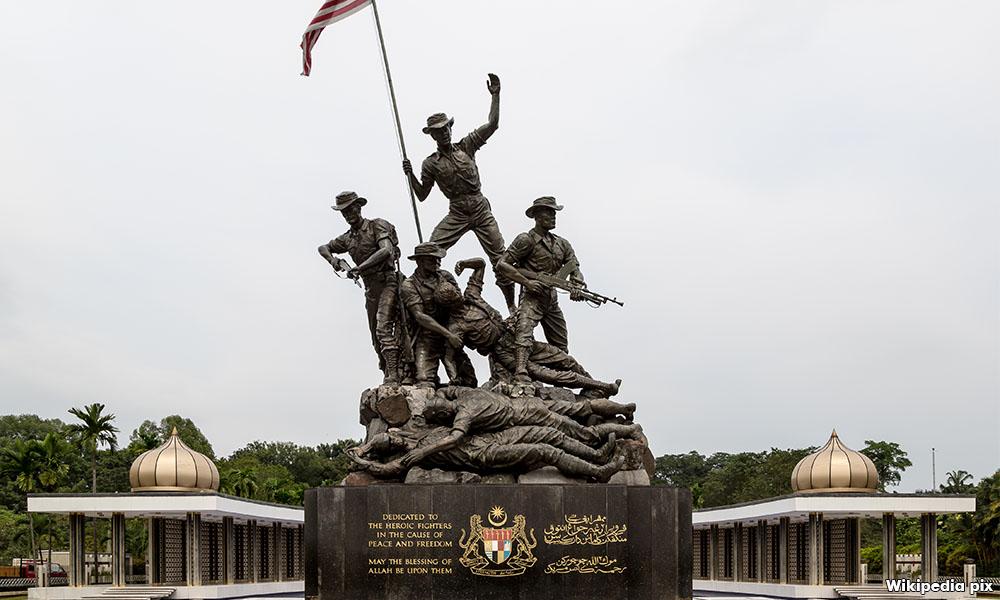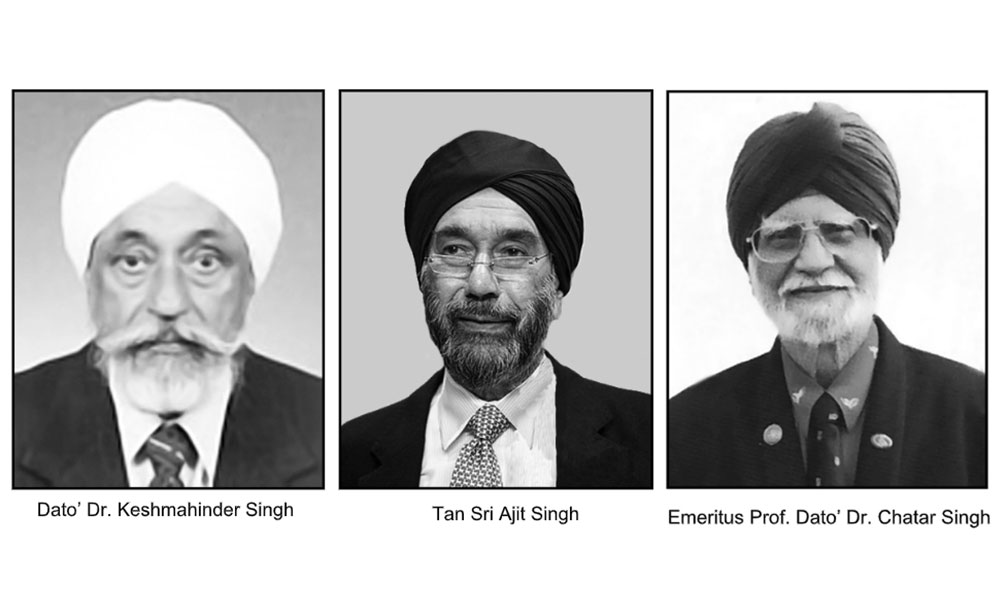Outsized contributions of Malaysian Sikhs
HISTORY: TOLD AS IT IS | The Malaysian Sikh community, which currently totals about 80,000, constitutes less than 0.25 percent of the nation’s population. Nevertheless, the Sikhs have made significant contributions to the growth and development of the nation that far outweighs their tiny representation.
It is also remarkable to note that within one generation, the Sikhs rose from being policemen, bullock carters, watchmen, dairymen and mining labourers to become professionals such as doctors, lawyers and engineers as well as academics, high-ranking civil servants and top businessmen.
Not many people are fully aware of the significant contributions of Malaysian Sikhs towards nation building. Hence, this article seeks to highlight their significant role in nation building, ranging from maintaining law and order to promoting the early economic development of the nation. It also traces their historical background in Malaysia.
Ever since the 1870s, Sikhs started immigrating to Malaya from Punjab, India - their ancestral homeland - to serve in the police and paramilitary forces. With regard to the policing of British Malaya, the objective of the British government was, in the words of Thomas R Metcalf, “to make colonial police forces as much ‘Sikh’ as possible.” It should be noted that the Sikhs formed the backbone of the police and paramilitary forces of colonial Malaya at least until the First World War and were numerically second only to the Malays in the forces before World War II.
Interestingly, the origins of the Royal Malaysian Police can be traced to the pioneer recruits who were enlisted in 1873 by Captain Tristram Speedy in Lahore, Punjab for service in Perak.
Captain Speedy, a former Superintendent of Police in Penang, managed to recruit 95 discharged sepoys - Sikhs, Pathans and Punjabi Muslims - to help Ngah Ibrahim, the Malay chief of Larut, Perak to restore law and order. Trade and tin mining in Larut were disrupted by frequent fighting between two warring Chinese clans: Ghee Hin and Hai San. Incidentally, this is the same Captain Speedy whose name was associated recently with a controversial whisky brand!

The sepoys were reenlisted as the Resident’s Guard after the signing of the Pangkor Engagement in January 1874 and became the nucleus of the Perak Police together with a few Malays and Chinese constables. This force was renamed the Perak Armed Police in 1877 under the command of Lieutenant Paul Swinburne. The Sikhs and Pathans formed the paramilitary guard and the Malays served as the criminal police. The Perak Armed Police was renamed on May 15, 1884 as the First Battalion Perak Sikhs to reflect its military character.
First World War
From 1880s onwards, Sikhs were recruited in considerable numbers into the police forces of Selangor, Negeri Sembilan and Pahang. Sikhs were also recruited into the police forces of the Unfederated Malay States. In 1909, the Perlis police force had 27 Sikhs whilst about 60 Sikhs formed the ‘Military Police’ in Kelantan. By 1909, Kedah had 134 Indians (mainly Sikhs) in the rank and file of the police force. In 1915, some Sikhs were recruited into the Johor police force after a British Adviser was appointed to the state in 1914.
As for Sarawak and British North Borneo (Sabah), Sikhs were recruited into the police and paramilitary forces in considerable numbers from the 1890s onwards. By the first decade of the 20th century, the Sikhs formed the backbone of the Sarawak police force and the North Borneo Constabulary.
The Sikhs played a major role in the policing of British Malaya, North Borneo and Sarawak, particularly before 1914. They contributed greatly towards enforcing law and order in addition to maintaining peace and security which was vital for economic development in these territories (now Malaysia).
Additionally, Sikhs formed the nucleus of the Malay States Guides (MSG), Malaya’s first military regiment established in 1896. The MSG saw action overseas in the First World War and fought gallantly with the Aden Field Force (in the Middle East). Notably, several Malayan Sikhs serving the MSG won decorations for gallant or distinguished military service. The Tugu Negara (National Monument) lists the names of 33 Sikh soldiers, presumably men of the MSG, who had sacrificed their lives during World War I.

Another forgotten but important contribution of Malayan Sikhs is that numerous among them serving the police and military forces also sacrificed their lives fighting the communists during the Emergency (1948–60). For example, six Sikhs, including Inspector Kartar Singh together with a Punjabi Muslim and a Malay policeman, were killed in a communist ambush on July 12, 1949 at Bukit Munchong, a few miles north of Rawang.
Another example is that of Captain Hardev Singh, an Intelligence Officer with the Sixth Malaysian Brigade. He was killed, together with four other soldiers, in an ambush by communists at Kota Ayer near Gubir, Kedah on April 10, 1975.
Sikh bullock carters
Pertaining to the early economic development of British Malaya, it is not widely known that the Sikhs played an instrumental role, particularly in the Federated Malay States, through their virtual monopoly of bullock carts which were then the main mode of road transport from the 1880s until the late 1920s.
Sikh bullock carters contributed significantly to the early development of the tin mining and rubber industries by providing crucial transport services. They transported tin ore from the mining centres to wharves at the coastal ports or to the railway stations, latex from estates to smokehouses, and rubber sheets from smokehouses to towns for sale.
Sikh bullock carters also transported passengers as well as a wide array of goods and products that formed the mainstay of a thriving, commodity-driven economy. These included firewood, mainly chopped rubberwood which was the standard fuel until 1950s; timber from the jungles to the sawmills; construction materials for the building of roads and railways; and provisions from railway stations to towns.
In Negeri Sembilan, Sikh bullock carters played a major role in transporting tapioca - an important cash crop from the late 1880s till about 1910 - from Chinese-owned tapioca plantations to the factories.
In the 1930s, two-ton motor lorries had replaced bullock carts as the chief means of road transport in the larger towns. Bullock carts, however, remained an important means of road transport in small towns and rural areas until the 1950s. As stated in the Malaya Tribune (Sept 29, 1934), the bullock carters “were able to cover places which were inaccessible to motor transport.”
Interestingly, there is a Sikh bullock carter still operating today - Harcharan Singh “Taru” based in Batu Gajah, Perak. He is a third-generation bullock carter by day and a watchman by night.
When motorised vehicles became popular in the 1930s, the Sikhs were among the first to start lorry transport businesses and public transport bus services. Among the most successful Sikh entrepreneurs operating lorry transport businesses in Malaysia before the 1980s were Ginder Singh Gill, Gajjan Singh, Indra Singh Sujapur and Nashter Singh Rai.
In Negeri Sembilan, until the late 1970s, about 70 percent of the bus companies, including Utam Singh Omnibus Company Ltd, Seremban Town Service Sdn Bhd, Seremban Omnibus Company, Sepang Omnibus Company and Ludhiana Transport Syndicate, were owned and operated by the Sikhs.
‘Big, strong, friendly’
The Sikhs also contributed towards the economic development of Malaysia in their diverse roles as watchmen, moneylenders and dairy farmers.
The “Big, Strong and Friendly” Sikh watchmen provided vital security service, especially to safeguard premises of private businesses, throughout the length and breadth of the country. Day and night, they guarded banks, godowns, estates, mines, factories, retail shops, jewellery stores, hospitals, schools, and homes. Virtually all the watchmen on European and Chinese tin mines were Sikhs, who were also allowed to rear cattle by their employers.
They were enterprising too: Sikh watchmen doubled up as moneylenders by the day. Sikh moneylenders contributed to the development of the retail trade in Malaysia by providing short-term loans to shopkeepers. Indeed, the positive contribution of Sikh moneylenders to the growth of the nation’s economy was acknowledged by Sir Cecil Clementi Smith, High Commissioner for the Malay States: “Much might be written in condemnation of the Indian moneylender, though it must be recognised that he may, and not infrequently does, fulfil a useful part in the development of a young country.”
Furthermore, before the emergence of European-owned dairies and refrigeration in the mid-1930s, the dairy industry in Malaya was dominated by Sikh livestock entrepreneurs who supplied fresh milk. The Sikhs raised mainly cows and buffaloes, and operated largely from the outskirts of towns.

Finally, and more recently, several Malaysian Sikhs have made enduring contributions in various fields and brought honour to the nation. Among them are Dr Keshmahinder Singh, who was instrumental in the establishment of the Tun Hussein Onn Eye Hospital in 1986 and served as its first Medical Director (1986–94).
In the field of education, Emeritus Professor Dr Chatar Singh achieved distinction as one of the founding fathers of Universiti Sains Malaysia (USM). He, almost single-handedly, established USM’s School of Physics and Mathematics. Ajit Singh brought honour to the nation by serving exceedingly well as the first Secretary-General of the Association of Southeast Asian Nations (Asean) from January 1993 till December 1997.
In conclusion, to paraphrase WH McLeod, Malaysian Sikhs have impacted the growth and development of the nation far greater than their numerical strength might otherwise warrant. Our school history textbooks ought to duly acknowledge the contributions of this minority but highly dynamic ethnic group. - Mkini
RANJIT SINGH MALHI is an independent historian who has written 19 books on Malaysian, Asian and world history. He is highly committed to writing an inclusive and truthful history of Malaysia based upon authoritative sources.
The views expressed here are those of the author/contributor and do not necessarily represent the views of MMKtT.
✍ Credit given to the original owner of this post : ☕ Malaysians Must Know the TRUTH
🌐 Hit This Link To Find Out More On Their Articles...🏄🏻♀️ Enjoy Surfing!




















Post a Comment